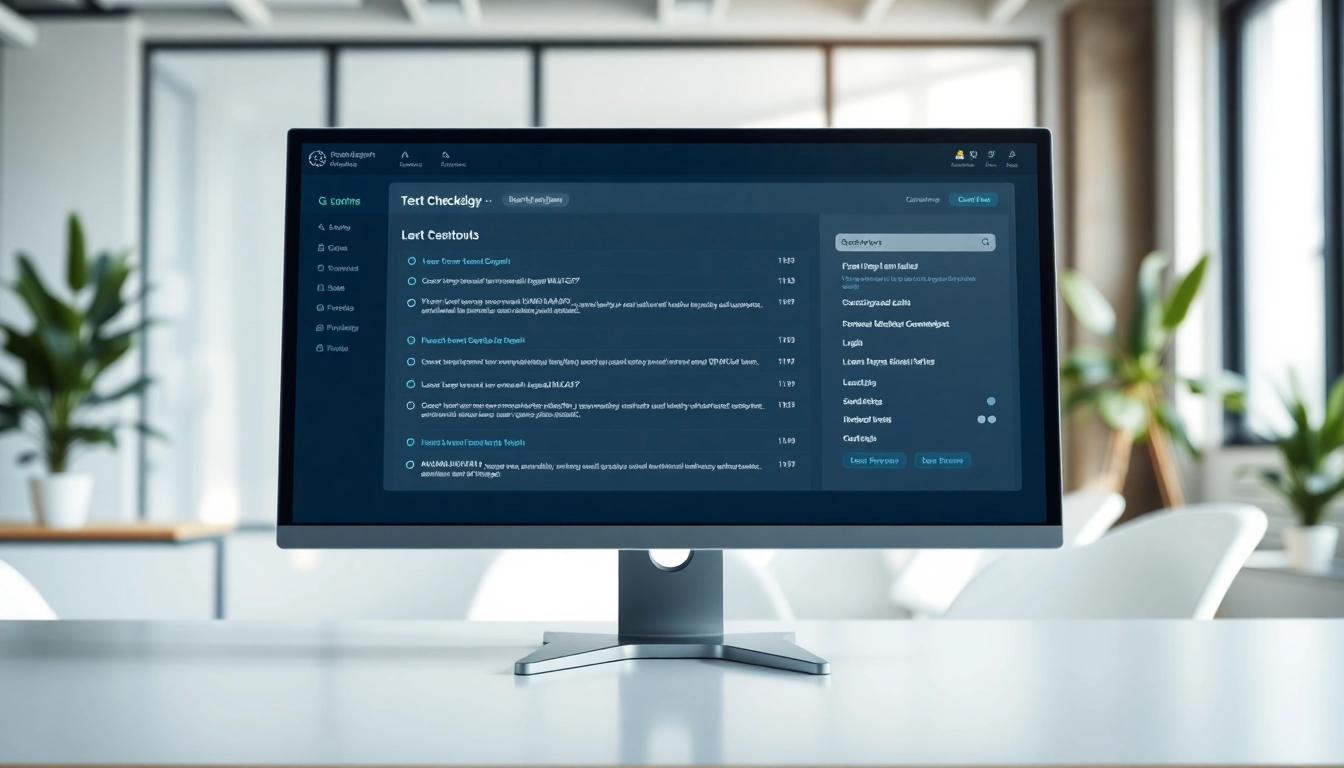Understanding the Importance of an AI Checker
In a rapidly digitizing world, artificial intelligence (AI) is playing an increasingly pivotal role in content generation. As a result, the authenticity of the content is becoming paramount. This is where an ai checker comes into play, serving as a vital tool in ensuring that the information being consumed or utilized is genuine. In this article, we will delve into the details surrounding AI checkers, elucidating their features, benefits, and how to effectively incorporate them into existing workflows.
What is an AI Checker?
An AI checker is a sophisticated tool designed to determine whether a piece of text was generated by a human or an AI model. These tools employ various algorithms and machine learning techniques to analyze the textual structure, assess linguistic patterns, and compare them against known benchmarks representing human and AI writing styles. By doing so, AI checkers help users discern the origin of the content, thereby enhancing content integrity.
Why Content Authenticity Matters
The significance of content authenticity cannot be overstated. With the proliferation of AI-generated content, distinguishing between human and machine-written text has emerged as a critical challenge. Issues such as misinformation, plagiarism, and violations of intellectual property rights are increasingly prevalent. By utilizing an AI checker, individuals and organizations can ensure that the content they produce or disseminate is not only original but also trustworthy, thus safeguarding their reputation and credibility.
Common Use Cases for AI Checkers
AI checkers can be utilized across various domains, including:
- Academia: Educators can use AI checkers to verify the originality of students’ assignments and research papers, ensuring academic integrity.
- Publishing: Content creators can assess the originality of articles, blogs, and other publications before sharing them with the public.
- Corporate Communications: Businesses can maintain their brand voice by ensuring that external communications align with company values and authenticity.
- Social Media Management: Marketers can validate user-generated content to reinforce brand trust and credibility in promotional campaigns.
Key Features of AI Checkers
Text Analysis and Detection Capabilities
One of the core features of AI checkers is their advanced text analysis capabilities. These tools typically utilize natural language processing (NLP) algorithms to evaluate various aspects of the text, such as:
- Style Analysis: Analyzing sentence structure, vocabulary diversity, and overall coherence to distinguish between human and AI-generated content.
- Contextual Understanding: Evaluating whether the text aligns logically with the subject matter, which AI might struggle to achieve at times.
- Repetition Detection: Identifying excessive repetitive patterns that may signify AI generation.
User-Friendly Interface for Ease of Use
Modern AI checkers are designed to be user-friendly, offering intuitive interfaces that make it easy for users to check their content. Key aspects include:
- Simplicity: Users can usually paste their text or upload documents with minimal technical knowledge required.
- Instant Feedback: Many AI checkers provide real-time analysis, allowing users to receive feedback swiftly.
- Visual Reports: Clear, comprehensible reports summarizing results help users understand the analysis and any suggested revisions.
Multilingual Support and Versatility
In today’s global landscape, AI checkers are increasingly offering multilingual support. This enables users to analyze content in various languages, broadening the tool’s applicability. The versatility of AI checkers also allows them to cater to different industries and content types, such as:
- Blogs and articles
- Academic research papers
- Marketing material
- Social media posts
How to Choose the Right AI Checker
Evaluating Accuracy and Reliability
When selecting an AI checker, the first consideration should be its accuracy and reliability. Users should examine:
- Detection Rate: The percentage of correctly identified AI-generated content should be high, ideally above 90%.
- Consistency: The tool should return consistent results across various samples of text.
- User Reviews: Reading testimonials and case studies can provide insights into the tool’s effectiveness.
Comparing Available Options in the Market
With numerous AI checkers available, it is essential to compare features, pricing, and user feedback. Consider not only the primary detection features but also additional functionalities, such as:
- Plagiarism checking}
- Content rephrasing capabilities
- Integration with content management systems
Understanding Cost vs. Benefit
The cost of AI checkers may vary significantly based on functionalities and service levels. It’s crucial to weigh these costs against the potential benefits an AI checker can provide. Implementing a reliable tool can save time and resources and protect against reputational risk, making it a worthwhile investment for many users.
Best Practices for Implementing an AI Checker
Integrating an AI Checker into Your Workflow
Implementing an AI checker into your content creation workflow can streamline processes and elevate quality. Here are several best practices:
- Training Staff: Ensure your team understands how to use the tool effectively, including interpreting results.
- Set Guidelines: Establish clear content guidelines that outline the use of the AI checker at different stages of content production.
- Encourage Feedback: Regularly solicit feedback from users to identify potential improvements in the process.
Combining AI Detection with Manual Review
While AI checkers are powerful tools, they are best utilized in conjunction with manual review processes. Consider the following:
- Human Insight: Editors can provide context and critical thinking that AI may overlook, ensuring that nuanced content is not misidentified.
- Final Checks: Use the AI checker as a first-line defense against AI-generated content, followed by manual proofreading for accuracy and tone.
Staying Updated on the Latest AI Developments
The field of artificial intelligence is continuously evolving. Staying abreast of developments and trends related to AI checkers can help users adapt and optimize their processes. Consider subscribing to relevant journals, attending webinars, and participating in professional networks focused on AI advancements.
Measuring Success with an AI Checker
Analyzing User Feedback and Performance Metrics
To assess the effectiveness of your chosen AI checker, it’s essential to analyze user feedback and performance metrics. Key indicators include:
- Engagement: Monitoring user interaction with the tool can reveal how effectively it is being utilized.
- Quality of Output: Evaluating the quality of content post-check can help quantify the AI checker’s impact.
- Reduction in Errors: Tracking the frequency of errors in published content before and after implementing the AI checker can provide valuable insights.
Long-Term Benefits of Using an AI Checker
Investing in an AI checker can yield significant long-term benefits, including:
- Enhanced Credibility: Consistent use of an AI checker can build trust in your content among audiences and stakeholders.
- Improved Content Quality: A robust editorial process, supported by an AI checker, promotes higher-quality outputs.
- Competitive Advantage: Staying ahead of competitors through reliable content can contribute to improved brand positioning.
Future Trends in AI Detection Technology
The future of AI detection technology is poised for significant advancements. Some anticipated trends include:
- Increased Accuracy: Enhanced algorithms may lead to more precise detection capabilities.
- Real-Time Feedback: Future AI checkers may offer immediate, contextual suggestions during content creation.
- Ethical Considerations: As AI becomes more sophisticated, discussions around ethical implications and responsible use will become more prevalent.



